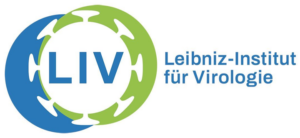
P09 - Jens Bosse
Kontrolle der HCMV-Transkription durch kompositorische
Abstimmung der PML-Kernkörper
- Phase separation
- Human Cytomegalovirus
- Live-cell imaging
- PML nuclear bodies
- Compositional control

Herpesviren wie das humane Cytomegalovirus (HCMV) nutzen den Zellkern für die Transkription und Replikation ihres Genoms. Nach dem Eindringen docken die Kapside an die Kernporen an und injizieren ihr Genom in den Zellkern. PML-Kernkörper (PML-NBs) sind eine der bekanntesten antiviralen Organellen, die mit dem viralen Genom interagieren. Sie bestehen aus PML-Proteinen als Strukturkomponenten und zellulären Proteinen, die über SUMO-SIM-Wechselwirkungen als Klienten gebunden werden können. Bisher ging man davon aus, dass HCMV PML-NBs für eine effiziente Transkription und Replikation auflösen muss. Es scheint jedoch, dass die Koevolution zu einer komplexeren Beziehung zwischen antiviralen Abwehrmechanismen des Wirts und viralen Faktoren geführt hat. Neue Daten deuten darauf hin, dass HCMV einige antivirale PML-NBs abbaut und andere als provirale Faktoren wiederverwendet, um eine effiziente frühe Transkription und anschließende Replikation zu ermöglichen. Während kleine SUMO- und SUMO-Interaktionsmotive (SIMs) eine Rolle bei der Rekrutierung proviraler Faktoren von PML-NBs zu viralen Genomen spielen, ist unklar, wie diese spezifische Umverteilung mechanistisch vermittelt wird. Kürzlich wurde gezeigt, dass PML-NBs Eigenschaften von phasengetrennten, flüssigen, membranlosen Organellen mit SUMO-SIM-Wechselwirkungen als Organisationsprinzip aufweisen. PML-Proteine dienen als Gerüst und strukturelle Bausteine von PML-NBs, an die Proteine als Kunden durch SUMO-SIM-Wechselwirkungen binden können. Unsere vorläufigen Daten legen nahe, dass das HCMV-Protein UL112-113 flüssige Kompartimente an viralen Genomen bildet, die mit SUMO angereichert sind. Wir stellen die Hypothese auf, dass die Phasentrennung von UL112-113 ein virales Gerüst bildet, das das Organisationsprinzip von PML-NBs nachahmt, auf das sich zelluläre provirale Klienten umverteilen und die virale Transkription und Replikation fördern. Um diese Hypothese zu testen, werden wir hochauflösende, quantitative Mikroskopie an lebenden Zellen einsetzen und den Fluss der proviralen Faktoren während einer HCMV-Infektion auf Einzelpartikelebene messen. Störende Mutanten werden uns einen funktionellen Einblick in den zugrunde liegenden Mechanismus geben. Mit Hilfe der Live-Zell-Bildgebung der Transkription an einzelnen viralen Genomen können wir den Einfluss der Rekrutierung von Klienten an viralen Genomen direkt messen. Zusammenfassend wird dieses Projekt den Mechanismus beleuchten, wie HCMV zelluläre PML-Kernkörperklienten als provirale Faktoren für eine effiziente virale Transkription und Replikation nutzt.
Zur Beantwortung dieser Fragen setzen wir mehrere bildgebende, einzellige Verfahren ein, darunter Live-Cell-Light-Sheet-Mikroskopie, FRAP, FLIP sowie CLEM, und kombinieren sie mit quantitativer Bildanalyse.
Dieses breite Spektrum an Techniken ist nur dank der engen Zusammenarbeit innerhalb von DEEP-DV möglich.




